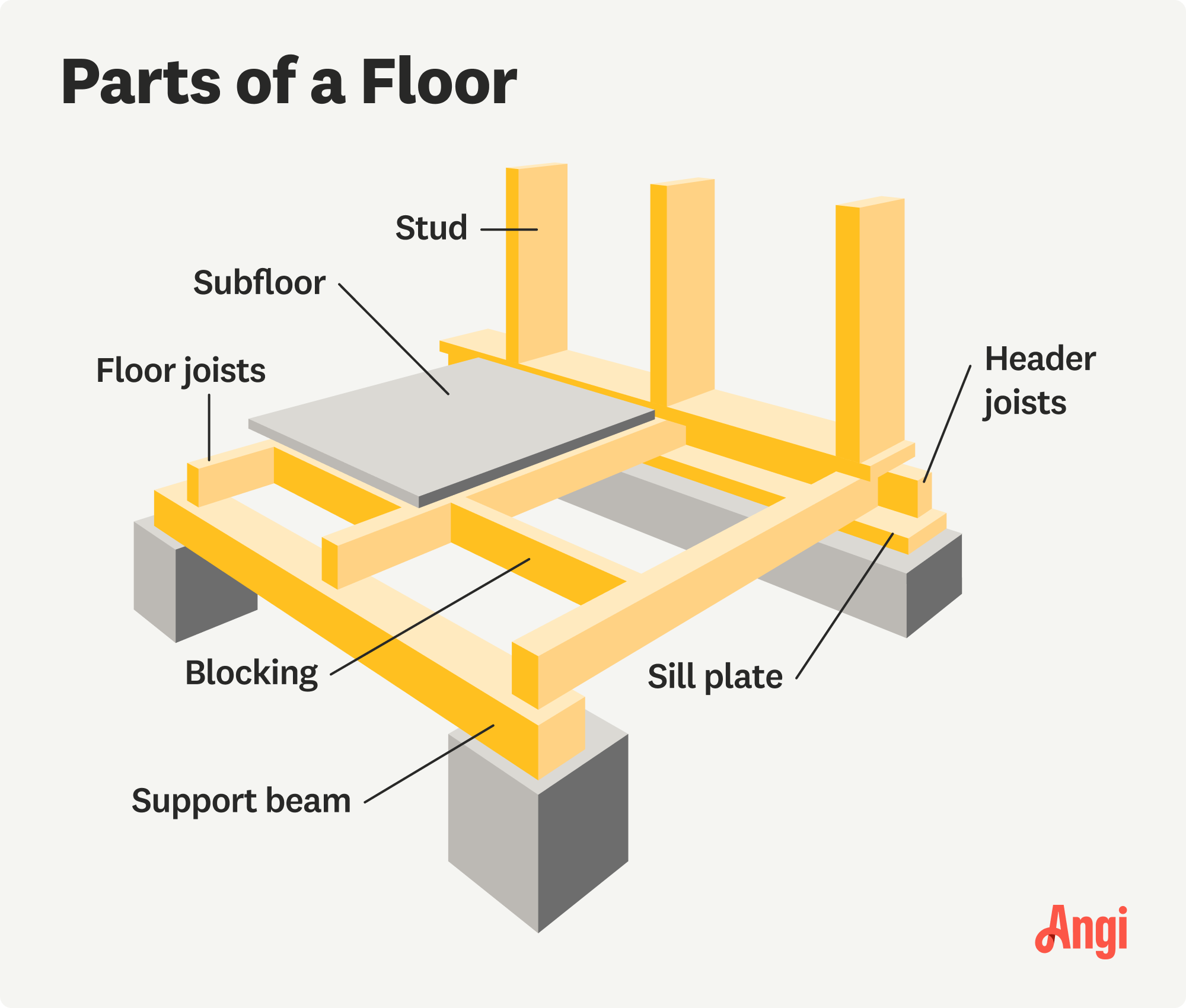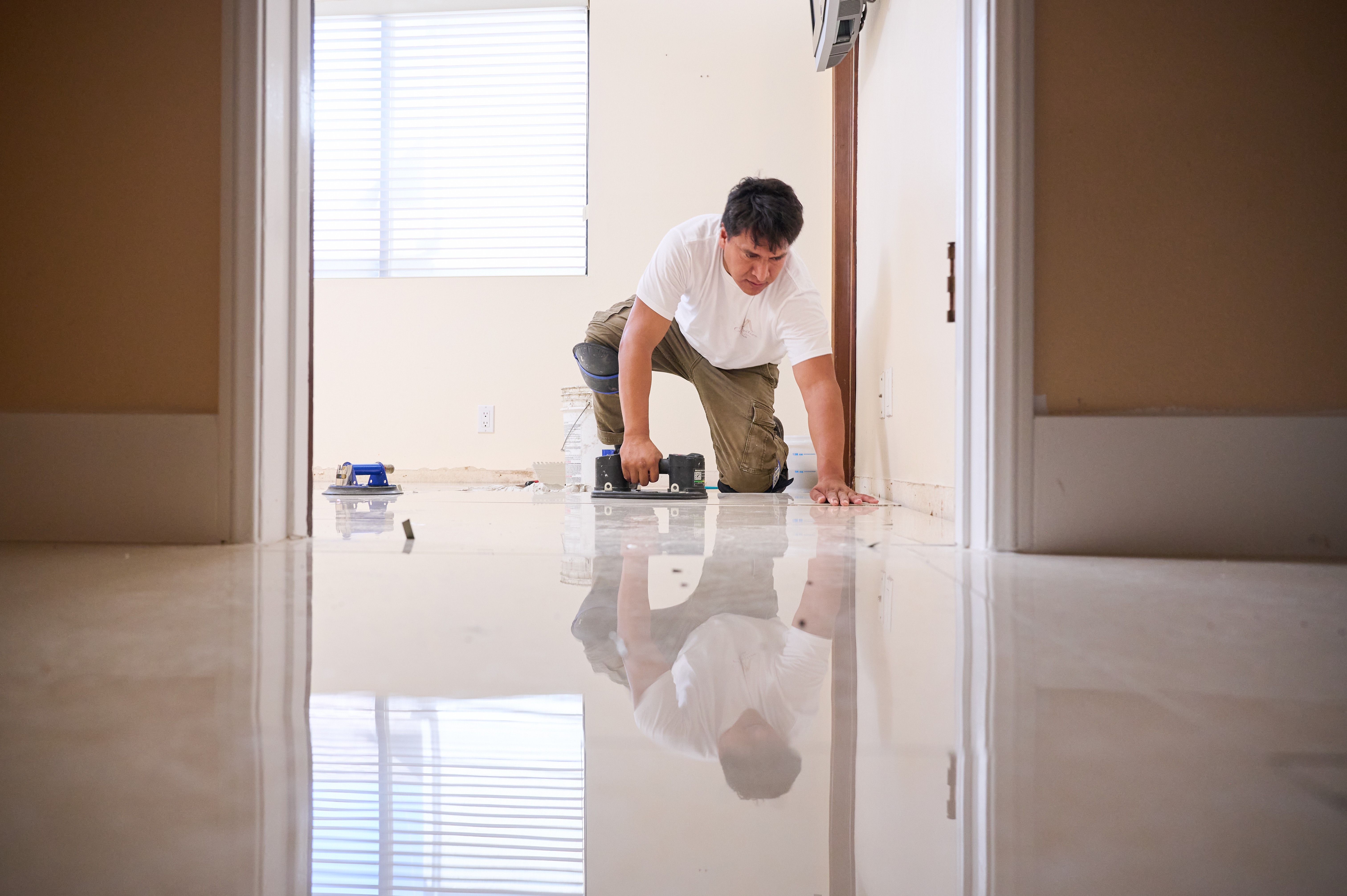
The cost to install Pergo® flooring depends on the type of flooring you choose. This brand is known for its laminate but has other things to offer.
Installing plywood subflooring costs $620 on average, with most homeowners spending between $600 and $700. A flooring professional will inspect the existing subfloor and determine the project's complexity.


Plywood is an effective subflooring material because it provides durability and stability and allows for simple installation.
Replacing old subfloors involves demolition, cleanup, and leveling, which increases costs.
While DIYing a subfloor installation can save on labor costs, a pro can ensure proper alignment, secure fastening, and long-lasting results.
The average cost of installing a plywood subfloor for a 300-square-foot room is between $600 and $700 or an average of $620. Plywood is a common material for subflooring due to its strength and affordability, costing $4.50 to $10.00 per square foot. Your subfloor is an important part of your flooring and is installed on top of the floor joists to helpaintain your floor's level, increase stability, improve insulation, and reduce noise in your home.
Creating a comprehensive budget for your subfloor project can help keep your floors functional and beautiful.

This isn’t a project with a long list of cost factors. For the most part, it consists of the cost of plywood and labor. However, these costs may go up if there’s moisture damage or a need for joist repair or replacement, along with the subfloor installation.
Installing a plywood subfloor costs between $4.50 and $10 per square foot, including material and labor fees.
| Room Size (Square Footage) | Average Plywood Cost | Average Cost With Labor |
|---|---|---|
| 100 | $150 | $450 |
| 150 | $225 | $675 |
| 200 | $300 | $900 |
| 250 | $375 | $1,123 |
| 300 | $450 | $1,350 |
Without labor, plywood costs about $1.50 per square foot. Most builders choose ¾-inch tongue-and-groove plywood interlocks for easier installation and a more solid floor.
“For sub-flooring, we not only specify 3/4-inch or more, but we also require tongue-and-groove (interlocking) panels,” says Bob Tschudi, Expert Review Board Member and general contractor in Raleigh, NC. “We also specify that the panels are ‘glued and screwed’ and not nailed. This reduces and, in most cases, eliminates squeaking.”
The labor fees to install subflooring range between $25 and $30 per hour, but the cost varies depending on your location and the complexity of the job.
Additional work—like removing existing flooring and subflooring, hauling old materials, or preparing a surface—costs extra.
“For many renovations we’ve done, we’ve discovered that people never remove old subflooring, but add new plywood—usually with a heavy-duty glue—on top of existing flooring,” says Tschudi. “This means that we have to cut away many, many layers of wood to get to the original framing, which is time-consuming and adds cost to the project.”

There are times when you can save money repairing a plywood subfloor instead of replacing it. Consider repairing the subfloor if there’s minor damage localized to one or two areas. For example, if you had a leak that only affected one or two plywood sheets, repair the affected areas and leave the rest.
On the other hand, you’ll want to replace your subfloor when it is damaged extensively. Damage from mold, rot, or structural issues is most likely the reason for a replacement.
You may also want to replace a plywood subfloor if you’re undertaking a significant remodel or you live in an older home that could benefit from a subfloor refresh. Consult a pro to assess the subfloor’s condition and check moisture levels. If moisture levels are high, get estimates and recommendations for how to protect the longevity of the floor.
Installing your own plywood subflooring will help you save on labor, but this isn’t a simple DIY project. Without the right experience, you could make a mistake that results in uneven or unstable floors, moisture damage, and expensive repairs down the line. Plus, if you don’t already have the right tools and supplies for the job, you could end up spending more than you’d pay a local flooring company.
There are many reasons why it’s best to hire a pro for plywood subfloor installation, including:
Flooring professionals have the skills to remove old subflooring, level floors, and seal subflooring to prevent water damage.
They also have the proper tools and equipment—including saws, electric drivers, and safety gear—for the job.
Pros know the safest ways to work with power tools so they don’t injure themselves or damage your flooring.
Experts understand local permitting rules and building codes to keep your project in compliance.
If there are additional issues (like moisture problems or joist damage), a pro can spot them (and fix them) during installation.
Trustworthy flooring companies have workers’ compensation and general liability insurance.
Flooring pros work more efficiently than DIYers, so the project takes less time.
While it’s best to hire a pro to install or replace subflooring, there are some parts of the project you can tackle yourself, including:
Moving rugs, furniture, appliances, and other belongings out of the way
Removing baseboards in the work area
Covering nearby furniture and walls with drop cloths
Pulling up the existing flooring and subfloor
Reserving a parking space for your contractor’s vehicle
If you’re looking to save on the cost of replacing subflooring, examine estimates for tasks that you can DIY. For example, you could save on labor costs by removing and disposing of the current subfloor yourself.
Some projects might require more expertise than others, such as fixing uneven joists beneath the subfloor. DIY mistakes can lead to costly repairs, so make sure you’re comfortable with tackling the task before going all in.
You can also keep costs down by skipping customizations, such as extra cushioning, sound dampening, or waterproofing.
Since the cost of subfloor installation depends on the size of the space, be prepared to provide the square footage of the area.
Get an estimate of how long the project will take (and find out if you’ll need to move out while the pros work).
Ask your pro if there’s anything you should do to prepare for the installation.
If you think there may be mold or insect damage to your subfloor, bring that to the pro’s attention.
Home is the most important place on earth, which is why Angi has helped more than 150 million homeowners transform their houses into homes they adore. To help homeowners with their next project, Angi provides readers with the most accurate cost data and upholds strict editorial standards. We extensively research project costs to develop the pricing data you see, so you can make the best decisions for you and your home. We rely on reputable sources, including the U.S. Bureau of Labor Statistics, academic journals, market studies, and interviews with industry experts—all to ensure our prices reflect real-world projects.
Want to help us improve our cost data? Send us a recent project quote to [email protected]. Quotes and personal information will not be shared publicly.
From average costs to expert advice, get all the answers you need to get your job done.

The cost to install Pergo® flooring depends on the type of flooring you choose. This brand is known for its laminate but has other things to offer.

Laminate is a solid choice for many homes because it's durable and budget-friendly. Check out this guide to learn about laminate flooring installation costs.

Updated flooring can make any room in your home feel brand new. Explore flooring installation costs in St. Louis, MO, from materials to labor costs.

Installing new floors doesn’t have to be messy or difficult. Here’s how to install linoleum flooring, from prep work to finishing touches.

Should you nail or glue baseboards when completing a room’s trim? Here’s how to evaluate the pros and cons of each, then make the right choice for your project.

Concrete floors aren’t just for warehouses and trendy stores. Find out how these nine concrete floor finishes can transform the look of your space.